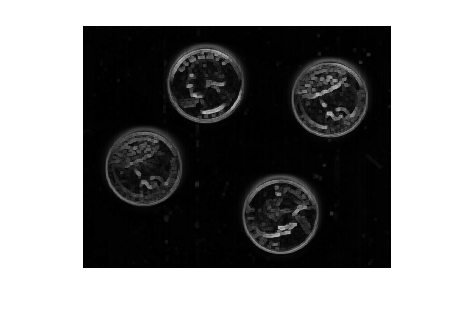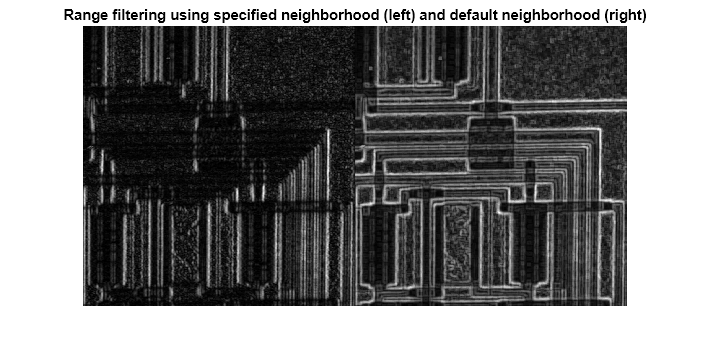rangefilt
Local range of image
Description
Examples
Input Arguments
Output Arguments
Algorithms
The following figure shows how the value of element B(2,4) was
calculated from A(2,4). By default, the
rangefilt function uses a 3-by-3 neighborhood but you can
specify neighborhoods of different shapes and sizes.
Determining Pixel Values in Range Filtered Output Image
rangefilt uses the morphological functions imdilate and imerode to determine the maximum and
minimum values in the specified neighborhood. Consequently,
rangefilt uses the padding behavior of these morphological
functions.




